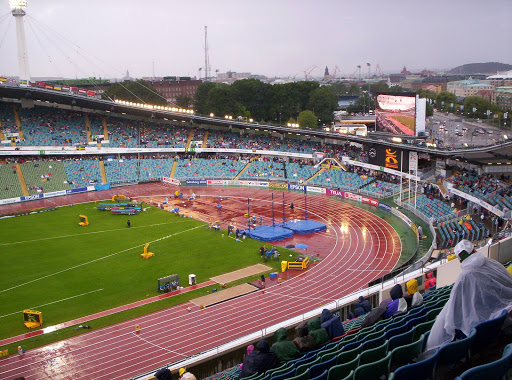Clicca qui per la versione italiana
Inter is preparing to face Real Madrid again in the Champions League. Many memorable clashes between the two teams, starting with the final of 1964 and the double semifinal of 1966 and 1967. I cannot remember them, as I was born in 1968: I remember well the four clasges between 1981 and 1986, in all the three cups.
That of 1981 was the semifinal of the first European Cup that I remember for Inter: I still remember it better than the one won in 2010. The final was going to be in Paris, and with my father we fantasized about going there. The hopes diminished after the first leg, lost 2-0: the best chance was in the final by 17-year-old defender named Beppe Bergomi. My father consoled me by saying that the comeback was not impossible: their defense was not unbeatable
We got to the second leg: if I'm not mistaken, I was in what is now the second orange deck, more towards the south terrace. I remember a game played on offense, but after the first half ended 0-0 the hopes of making a comeback had diminished. Then, around the 10th of the second half, Bini scored: I remember him cheering against the gate, towards the north terrace. Bini was one of the players I loved most and I still think he is the strongest player who has never played for the national team, at least in the almost 50 years that I can remember (of course, then the chances of playing for the national team were much less at that time). I therefore believed until the end that I would at least reach extra time, but I was disappointed: that goal was the only one.
The two teams met again two years later, in the quarter-finals of what was Inter's second and last participation in the Cup Winners' Cup, until its abolition in 1999. This time the first leg was at home. It was the first year with two foreign players: the second of Inter was the second striker Juary, a player I liked and always defended, but was not up to being one of the two foreigners of a big team. Today he would be a good third or fourth striker. In that match he had the opportunity to give his best contribution of the season: he scored the 2-0 goal, after Altobelli's first advantage, but the goal was unjustly disallowed. It then ended 1-1. We also got off to a good start in the return, taking the lead, but in the end we lost 2-1.
Another two years passed: Inter reached the Uefa Cup semi-finals by eliminating two German teams in a row, first Hamburg and then Cologne and found Real. Still home match first: I don't remember much, I remember much more than the previous two rounds, especially the one with Cologne, played in the flood. It still ended 2-0, so we thought it was the right time. Instead in the second leg, around the 30th, on 1-0 for Real, Bergomi collapsed to the ground. The videos showed that he had been hit by a marble thrown from the stands, but the referee did not notice it (and in any case we couldn't have taken for granted to be assigned a 3-0 victory, like in the Italianleague). It ended 3-0, and the result of the field was confirmed: TV evidence was not allowed.
The following year we were back in the Uefa Cup and in the third round we thought we had got rid of Real: in the first leg they lost 5-1. Instead they won 4-0 in the second leg. and we found them again in the semifinals. First leg home: it was a rainy evening, I was between the north terrace and the deck above the main grandstand, therefore on the boundary between the current green and red sectors of the second deck. A few minutes from the end we were 2-0, then we conceded a goal, so I thought "it's going to be bad again". In injury time, however, we scored 3-1, it seems to me on an own goal, so we got to the second leg with reasonable hopes that it was the right time. Instead we found ourselves without strikers (Rummenigge was missing and Altobelli was hurt during the match, or vice versa) and we lost 5-1 in extra time.
We met Real Madrid 13 years later, in the 1998-99 Champions League, and we won at San Siro. But now I was in Rome.
















































